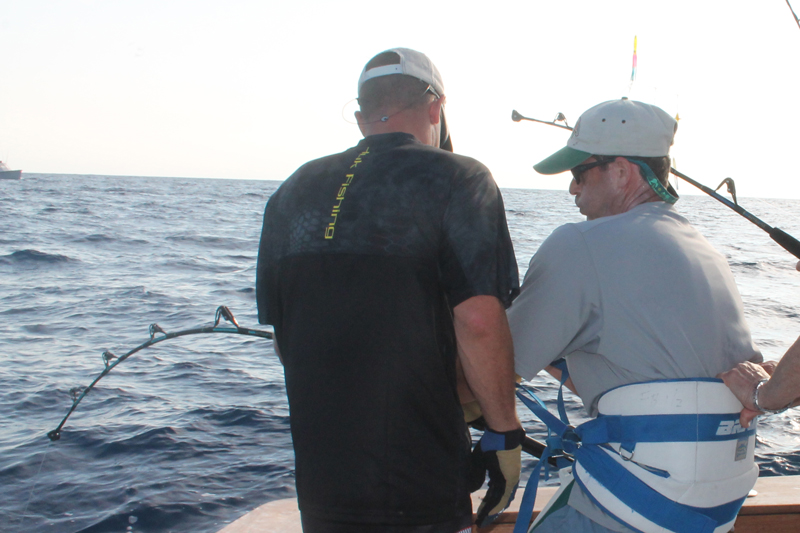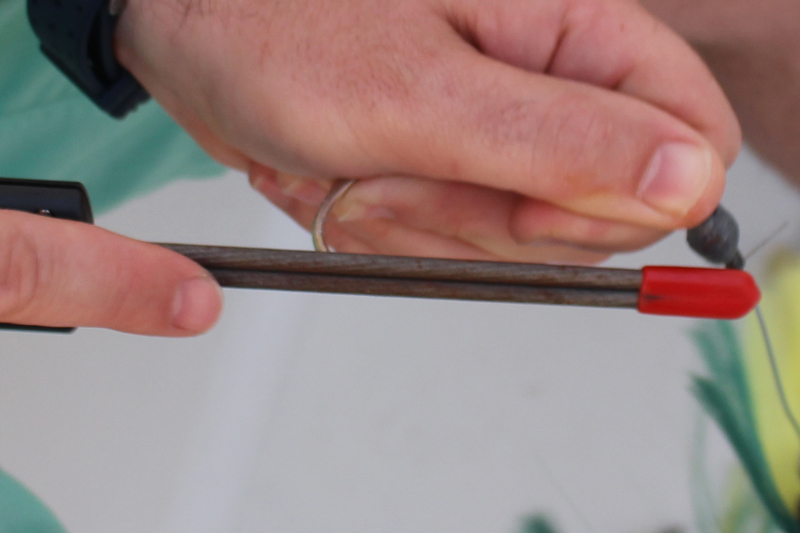You tossed Aunt Martha’s crusty fruitcake into the trash, the cranberry sauce got removed from the fridge when green fuzz started growing, and you just poured three gallons of expired eggnog down the drain — so, why don’t you get rid of fishing gear that’s aged poorly, too? There are some things that you should get rid of along with that 2022 calendar, yet most anglers end up trying to re-use this stuff season after season. Instead, make a resolution to get rid of these throw-away items and you’ll end up catching more fish as a result.

FISHING LINE
You think you can make that mono stretch for one more year? You can if you enjoy break-offs. Monofilament can lose up to 20-percent of its strength annually, depending on how it’s stored and how much it’s used. Not only does old line collect nicks, scratches, and kinks that result in a weakened status, it also loses strength due to natural deterioration. Sunlight is the worst offender, robbing monofilament of both strength and flexibility. Anglers who store their reels where they’ll be hit by sunlight should replace all of their mono each and every season. Those who store their gear in closed, sunlight-protected areas can usually get away with two seasons of use. Three seasons is a stretch for anyone, since the line is sure to be in poor shape due to abrasion if you use it often. Conversely, if you only use it on occasion it’ll be kinky and springy from spending so much time wound up tight on the spool. Either way, make it your mission to re-spool those reels with fresh stuff and you’ll end up catching more fish.
What about braid? It doesn’t deteriorate the same way as mono, and can be used for several seasons. Line wear is the limiting factor for this stuff, so you’ll have to make a judgment call as to when your braid has reached the end of its life span depending on how much you use it and how much abrasion it takes. See The Best Fishing Line: Monofilament Versus Braid to learn more about the difference between these types of fishing lines.
FISH HOOKS
Rusty old hooks lead to missed bites. That’s why you should throw used hooks away and buy new ones at the end of the season. Wait a sec — why not simply re-sharpen them? Sure, you could run those hooks over a stone or a file and get them back into working shape. But do so and you’ll expose new, unprotected metal to the saltwater environment, ensuring even quicker decay than the hook already experienced. On top of that, with modern chemical and laser sharpening you don’t have a prayer of getting that old hook half as sharp as a new, high-quality hook is going to be.

DULL PLASTIC LURES
Those bright chartreuse plastic shad went dull, and now they have a washed-out yellowish look to them? But, but, but… they’ll still work, won’t they? Sure. Just not as well a shiny new plastic shad would on those days when the fish want chartreuse. You’ve spent big bucks on a boat, fishing rods and reels, tackle, and more, and now you’re going to accept a drop in bites to save less than it costs to pump a few gallons of fuel into the tank? C’mon, you skinflint! Toss out those dull old plastics, and get a new set before the next season arrives.
COPPER RIGGING WIRES
Copper rigging wires get kinks and loops in them after just a few uses. But those wires will still work perfectly fine, you think? Yes, and when you reuse them you can usually pull the kinks through the ‘hoo without splitting the top jaw. Usually. But sometimes, a kinked rigging wire will split that jaw and the ballyhoo will be ruined. You’ll have to start rigging a new one all over again, and worse, you just destroyed a bait that costs over a buck — to save about five cents on a nine-inch piece of copper. Good move. Now, consider the wires that have been cut or broken short. How many times have you strived to re-use these, spent time rigging a ballyhoo, and discovered at the end that the wire just is half an inch too short to complete that final twist? Yeah, that’s what we thought, Mr. Tightwad.
KNOTS
Hold on just one dang second, you can’t throw away knots! Well no, you can’t. But we need to make sure no one’s trying to reuse old knots in monofilament from year to year. You should break ‘em off or clip them away and tie new knots in all of your gear, anywhere you find them. Knots left in mono for extended periods of time grow weak over time and will break far easier than they should. So pitch them in the metaphorical trash can, and start with fresh knots come spring.
OPEN GULP! BAITS
Once the seal has been broken, these packages are prone to leaking and should be considered like hazardous material. The last thing in the world you want is GULP! juice dripping out into your tackle box or gear bag. Trust us — the sticky, smelly mess is incredible. And if it spills or leaks out in the wrong place, you’ll be enjoying eau de la minnow slime for months to come.
CHIPPED LEADHEAD JIGS
The problem here isn’t that unpainted heads don’t work (they do), but once the paint on a lead jig head chips, flakes and bits of paint continue chipping off forever more, soon followed by a flow of lead dust. Put a chipped head back in the tacklebox and the next thing you know paint chips will migrate through all the different compartments, contaminating everything from soft plastics to bucktails. Especially on small boats that take a beating on the bay or ocean, this can become a significant problem. Lure finishes get ruined, color patterns get changed, and everything in that box is at risk. (Not to mention the health hazards of having lead dust all over the things you’ll be handling.)
So: are you ready to go through all of your gear, do some winter cleaning, and get everything in shape for 2023? Get out the garbage can, and prepare to fill it to the brim. Don’t cheap out, don’t risk losing fish, don’t try to recycle things that are best tossed out — send the above items to the dump, along with Aunt Martha’s fruitcake.